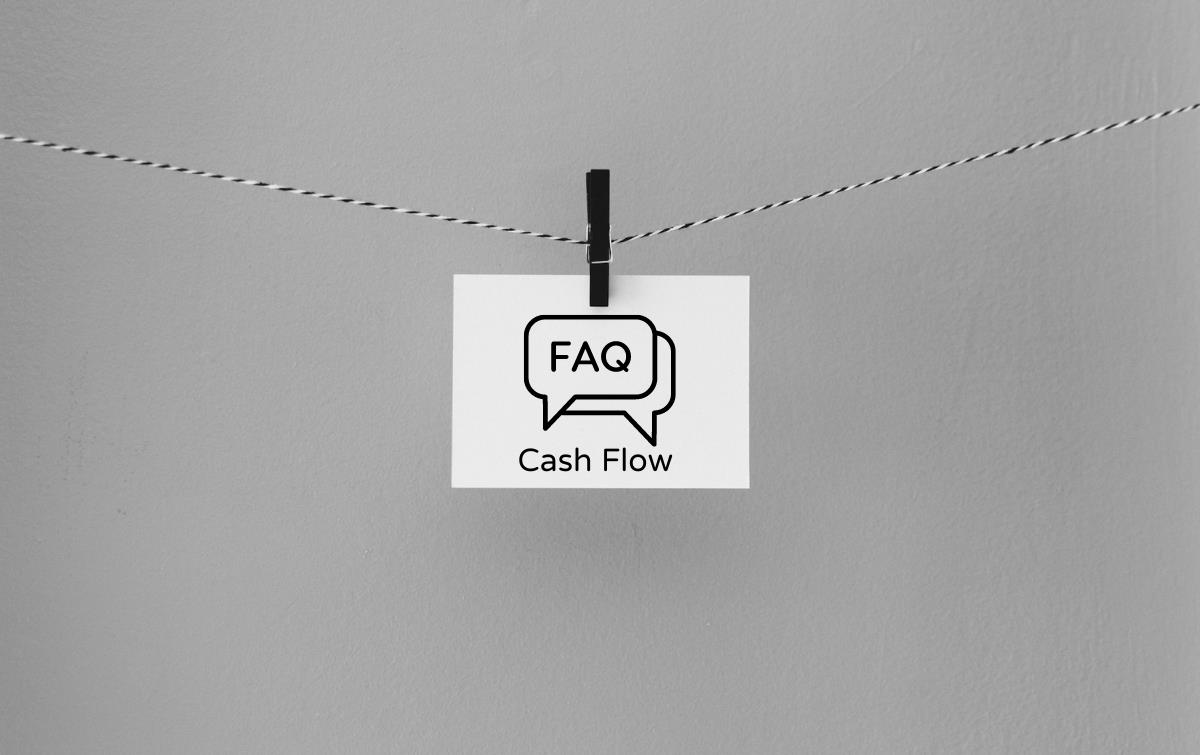Cash flow, in its simplest terms, is the amount of money moving in and out of your business. There are two types of cash flow: positive and negative. Positive cash flow means there’s more money coming into your business, and your liquid assets are increasing. A negative cash flow means you're using up funds faster than you can replace them.
A negative cash flow doesn’t necessarily mean your business’s future looks gloomy. However, if it is consistently negative, then there is cause for concern. Mismanaging your cash flow can easily cause your business to fail. In this article, we’ll discuss how you can avoid this and improve your cashflow in 8 steps.
Methods to improve your cash flow

Maintaining a healthy cash flow is a constant hurdle for many business owners. Essentially, the foundation of improving and managing your cash flow is controlling your expenses and regulating your income. Here are 8 ways to do that:
Forecast your cash flow accurately
This is a great way to anticipate future cash bottlenecks and even prevent business closure. Set some time aside to calculate weekly or monthly cash flow projections for the next 6 months. Remember to stay on top of your bookkeeping so you can forecast accurately.
Cash flow forecasts are beneficial to any business. They can help improve and sustain a healthy cash flow by predicting shortages, and this can greatly improve the business’s financial situation.
Price yourself competitively
If you’ve just started your business, you may have underpriced yourself to try ramp up your sales. But sometimes low prices can negatively impact your cash flow and make it difficult to increase your prices at a later stage.
Don’t underestimate yourself or your product’s value. Ensure you conduct accurate market research and implement competitive pricing. If your customers aren’t happy with an increase, be prepared to defend your reasoning or leave room to negotiate a discount.
Include flexible payment options
Payment barriers are a huge pain point for customers, so it is crucial that you offer them easier ways to pay for your service or product (that are suitable for your business). Whether it’s bank transfers, PayPal, BNPL (buy now pay later) or cash, offering customers multiple easy-to-find and seamless payment processes will help solve cash flow problems by recouping costs and mitigating debt recovery.
If you are invoicing your customers, it is essential to understand their payment cycles and control this credit accordingly. If you fail to invoice your clients accurately and timeously, you will run into cash flow problems.

Develop an effective debt chasing process
Effective cash management strategies are a key pillar to positive cash flow, so having a proactive debt chasing process in place is vital. Failing to quickly collect overdue payments from customers will detriment your business’s cash flow.
If you have a small team and don’t have the time to chase customers (or you don’t want to risk spoiling a relationship), we recommend investing in a third-party debt collection service. Agencies like these will help you maintain good credit management and can also help protect customer relationships if payment disputes arise.
However, if a customer is consistently paying late (or not paying at all), then it may be time to take a more serious cause of action – like banning them.
Invest in your business and team
Small business owners should always invest in their business and their team. Upskilling employees and improving how you promote your business is a great way to improve cash flow. Whether it’s streamlining your workflow, implementing better marketing practices, or providing cash management training, investing in your business and training employees is one of the best solutions to cash flow problems.
Review your payment terms
To help keep your business running and improve your liquidity, you may need to review and negotiate your payment terms with customers (especially large clients).
While it’s important to stick to your payment agreements, longer payment terms can end of impacting your short-term cash flow. Also, giving customers too much purchasing power can make it difficult to renegotiate payment terms.
Think about introducing quarterly payments, a deposit, or an incentive for early payments.
Cut costs
We understand that cutting costs to improve your cash flow is easier said than done. But this doesn’t necessarily mean you need to drastically reduce your spending. Small reductions throughout your business can bring major returns.
Intricately analysing your spending and finding ways to reduce costs can boost your short-term cash flow. Some areas you can consider reducing spend on include:
- Office supplies
- Heating and electrical bills
- Marketing costs (particularly those that aren’t bringing ROI)
- Insurance
Employee salaries are another area you can consider, but only if you are seriously struggling with cash flow. You need to tread carefully with this option, because cutting employee pay can do more harm to your business than good.
Always prepare for changes and challenges
Having scenarios in place to deal with difficult changes is often overlooked as a method to improve cash flow.
External factors beyond your control are not easy to anticipate, so scenario planning is a great way to understand how certain events might impact your cash flow and how you’ll cope with them.
Here are some examples you can plan for:
- There are interest rate or inflation hikes.
- The price of raw materials increases.
- Your top sales employees resign.
- Exchange rate fluctuations.
- Customers dispute an invoice.
These are just some of the challenges your industry might face, so planning for them (even if they don’t happen) is a smart way to run your business and safeguard your cash flow.
FAQs on improving cash flow

What are the signs of cash flow problems?
There are many signs of cash flow issues, and it’s essential that you identify them sooner rather than later. Here are the top five signs of cash flow problems:
- Your customers are not paying on time.
- You have too much debt and cannot access finance options.
- Your profit margins are taking a hit from too much discounting.
- You have poor financial records and no signs of cash flow forecasting.
- You have excessive levels of stock.
How do you calculate cash flow?
Calculating your net cash flow can be relatively straightforward. A simple equation of how to calculate your cashflow is:
Cash Flow = Balance + Income – Expenses
Some of these variables will be estimates, so it may be best to ask an accountant for help.
Why is cash flow important?
Your cash flow is the lifeline of your business. It’s important because it is one of the key pillars to growing your business and becoming successful.
Understanding your cash flows means understanding your costs and revenue, and if you’ll have enough cash to cover expenses and still make a profit.
How can you quickly improve cash flow?
There are methods to improve your cash flow quickly, like accurately forecasting your cash flow on a monthly or quarterly basis, preparing for challenges in advance, cutting costs or implementing an effective debt chasing procedure.
Price increases, adding different payment options, and reviewing payment terms are some ways you can improve your cash flow in the longer term.
Cash flow: the most important thing to consider
The importance of cash flow for a business should not be underestimated.
Having a healthy cash flow doesn’t just indicate that your business’s liquidity is increasing and that you have control. It also means you can reinvest into your business, cover your expenses, and protect yourself against future financial obstacles.
In 2021, 23% of small businesses had difficulty managing a negative cash flow. Implementing these tips will ensure you’re not part of this statistic in 2023 and beyond.
We hope this article has been helpful, and we encourage you to read more tips on how to grow your business so you can keep succeeding.
